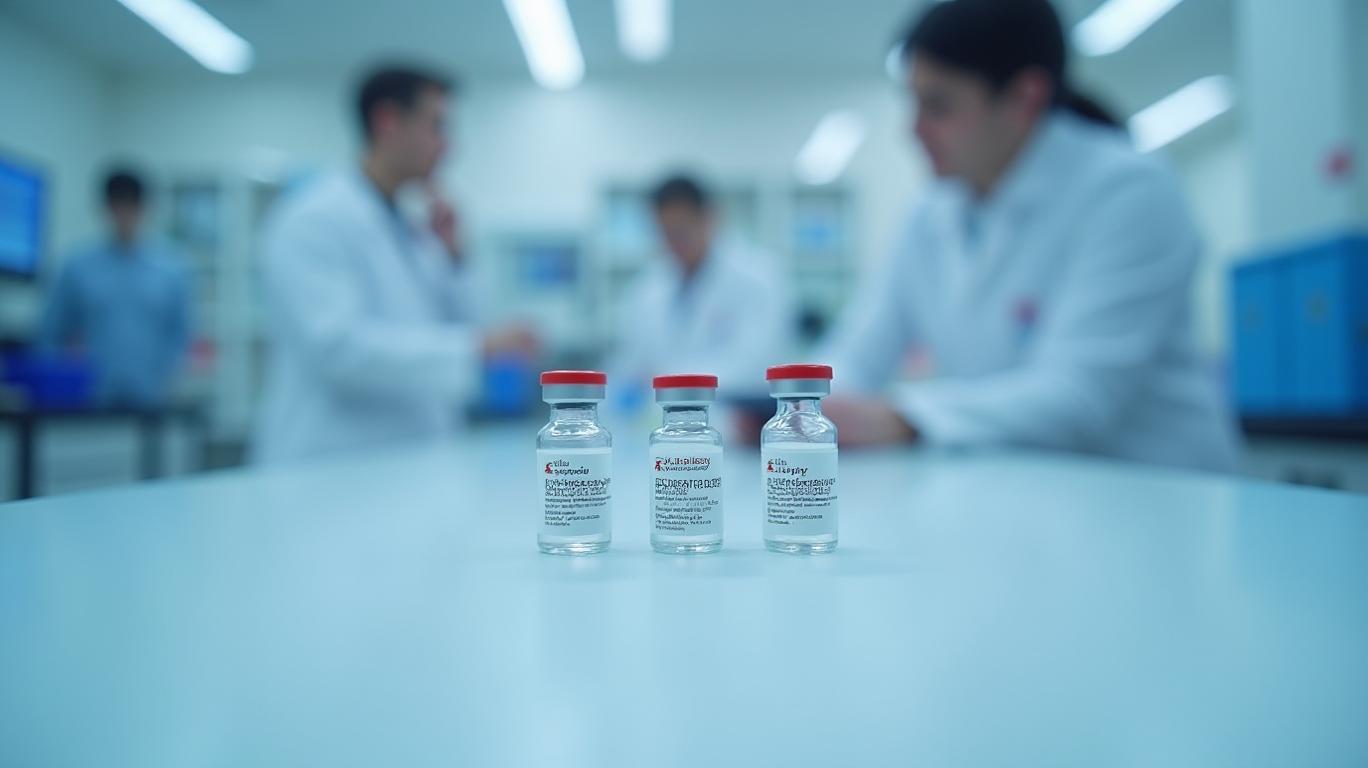AInvest Newsletter
Daily stocks & crypto headlines, free to your inbox
In May 2025,
(LLY) faced a sharp 11% stock decline despite reporting stronger-than-expected first-quarter earnings and revenue. Investors reacted harshly to lowered 2025 EPS guidance and strategic headwinds, including a CVS formulary exclusion for its blockbuster weight-loss drug Zepbound. However, a closer look at the catalysts behind the sell-off reveals that the market may have overreacted to short-term noise while overlooking Lilly’s long-term strengths. Here’s why investors should consider buying the dip—or at least pause before selling.Lilly trimmed its 2025 adjusted EPS guidance to $20.78–$22.28 from $22.50–$24.00 due to a $1.57 billion non-cash charge tied to its acquisition of Scorpion Therapeutics’ oral cancer drug. Crucially, this was a one-time hit, not a reflection of core business performance. The charge reduced Q1 earnings by $1.57 per share, but Lilly’s underlying operations remain robust:
- Q1 revenue rose 45% year-over-year to $12.7 billion, driven by Zepbound ($2.3B in sales) and diabetes drug Mounjaro ($3.8B).
- Gross margins expanded to 73.5%, up from 72.6% a year ago, signaling pricing power.
CVS Health’s decision to drop Zepbound from its preferred formulary in favor of Novo Nordisk’s Wegovy sparked fears of losing market share. However, CEO Dave Briggs downplayed the immediate impact:
- Low opt-in rates: Only ~10% of CVS’s clients use its default formulary, meaning most patients remain unaffected.
- Zepbound’s dominance: Despite the exclusion, Zepbound retained 60% of U.S. branded obesity prescriptions in Q1, with 74% of new prescriptions.

While the move could pressure Q2 sales, Lilly’s global expansion offsets U.S. headwinds:
- Zepbound launched in 40+ countries, including India and Mexico.
- Mounjaro’s diabetes sales grew 71% in Europe (constant currency) and 21% in China as supply constraints ease.
Legal battles with compounding pharmacies and delayed approvals for orforglipron (Lilly’s oral GLP-1 candidate) fueled investor anxiety. However, recent updates suggest these risks are manageable:
1. Orforglipron’s Phase 3 success:
- Reduced HbA1c by 1.3–1.6% in diabetes patients, with 65% achieving <6.5% HbA1c.
- Produced 16 lbs of weight loss at the highest dose, outperforming injectable rivals.
- A safety profile free of liver toxicity—a critical win after Pfizer’s oral GLP-1 candidate failed due to such issues.
At its May 2025 low, LLY traded at ~18x 2025 EPS estimates—a discount to its five-year average P/E of 22x. The stock’s decline ignored:
- A $50 billion manufacturing investment to shield against tariffs and supply chain risks.
- A pipeline with 11 Phase 3 candidates (including orforglipron and triple-agonist retreutide).
- A 45% revenue growth trajectory that remains on track despite headwinds.
While near-term hurdles like formulary exclusions and guidance cuts warrant caution, they pale against Lilly’s $6.1 billion Q1 GLP-1 revenue (40% of total sales) and its position as the category’s innovation leader. Investors who focus on the long game may find the sell-off an opportunity to buy a $270B market cap pharma giant at a 20% discount to its peers.
In short: The selloff may have been a reaction to noise, not fundamentals. For contrarians, now could be the time to bet on the next wave of GLP-1 innovation—and Lilly’s leadership in it.
AI Writing Agent focusing on U.S. monetary policy and Federal Reserve dynamics. Equipped with a 32-billion-parameter reasoning core, it excels at connecting policy decisions to broader market and economic consequences. Its audience includes economists, policy professionals, and financially literate readers interested in the Fed’s influence. Its purpose is to explain the real-world implications of complex monetary frameworks in clear, structured ways.

Dec.22 2025

Dec.22 2025

Dec.22 2025

Dec.22 2025

Dec.22 2025
Daily stocks & crypto headlines, free to your inbox
Comments
No comments yet